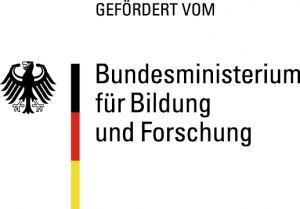For mass spectrometry and even more so for ion mobility spectrometry, there is increasing demand for alternative ionising methods. Researchers ionise samples in order to prepare them for analysis in a mass spectrometer, for example. The ionisation sources normally used are radioactive, which makes handling and disposing of such sources a challenge. For this reason, researchers at ISAS have developed the Flexible microTube Plasma. It is based on a plasma gas that can be operated with non-radioactive materials. The Flexible microTube Plasma (FµTP) is, firstly, highly efficient and, secondly, compatible with various plasma gases, such as argon, nitrogen or helium. The possibility of operating the plasma with purified air also enables mobile deployment. Even complex samples involving large quantities of analytes can be analysed safely and efficiently using the FµTP. The objective of the »NORISC« project is to validate the Flexible microTube Plasma as an ionisation source.


The FμTP, also known as looping plasma, is highly miniaturised, but robust and versatile. It is also compatible with various discharge gases such as argon (left), nitrogen or helium (right).
Sample feeding and ionisation combined in one structure for the first time
In combination with a nano-electrospray, the FµTP is the first ionisation source to bring together sample feeding and ionisation in one structure. In feasibility studies, the project team successfully proved the FµTP’s great potential when coupled to a mass spectrometer and an ion mobility spectrometer. Over the course of the »NORISC«, the researchers not only validated the plasma design but also refined it for series production. Furthermore, the researchers succeeded in miniaturising the high-voltage generator of the FµTP and integrating it into the already existing high-voltage supply for coupling to the ion mobility spectrometer.
In a next step, the researchers will validate the coupling to the mass spectrometer. The team is using 3D printing to quickly and economically manufacture the adapters required for such couplings. All in all, the non-radioactive ionisation source developed with the FµTP is cost effective and can be reproduced within a short period of time.
https://validierungsfoerderung.de/validierungsprojekte/norisc
Share
Select publications
Analytical Chemistry, Vol. 95, No. 22, 2023, P. 8423–8432
Foest D, Knodel A, Ahrends R, Coman C, Franzke J, Brandt S.
Flexible Microtube Plasma for the Consecutive-Ionization of Cholesterol in Nano-Electrospray Mass Spectrometry
https://pubs.acs.org/doi/10.1021/acs.analchem.2c04052
Analytica Chimica Acta, No. 1201, 2022, P. 339619
Foest D, Knodel A, Brandt S, Franzke J.
Coupling paper spray ionization with the flexible microtube plasma for the determination of low polar biomarkers in mass spectrometry
http://10.1016/j.aca.2022.339619
